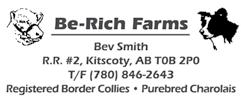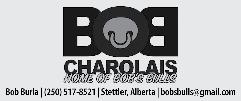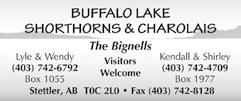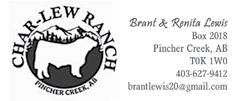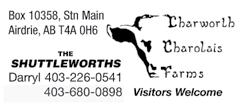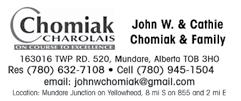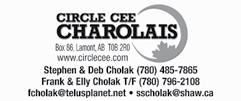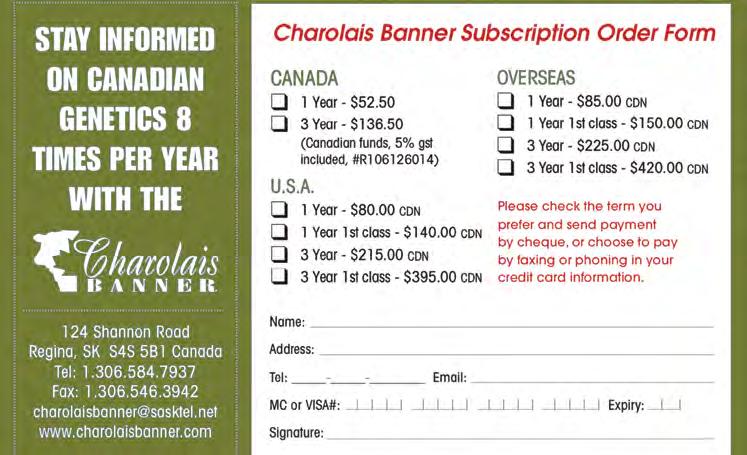
6 minute read
CCYA News
Joining the Canadian Charolais Youth Association is very beneficial to all youth within the Charolais industry. For $20 a year, you can participate in not only the annual conference, but also have the ability to take advantage of many other great programs.
One great program, to help build the genetics in your herd, is the “Purchase Incentive” program. In order to be eligible for this program, the youth member must purchase a Charolais or Charolais cross animal. You are then able to select two straws of semen from Semex or Genex, and CCYA will cover the cost of the semen. This program is great for starting a Charolais herd.
Advertisement
Another program that can be used, if youth have purchased and shown a Charolais or Charolais cross animal, is the “Buy and Show” program. With this program you are eligible to receive up to $125.
CCYA also has scholarships available for education and for travel. The “Travel Opportunity Scholarship” provides funding for a youth member to travel to any event that involves the Charolais breed or the cattle industry (excluding CCYA). CCYA also gives up to $3000 to deserving youth in the Charolais industry, who are enrolled in post secondary education.
To find out more on these programs, go to the Canadian Charolais Youth Association website https://youth. charolais.com/. Be sure to follow the CCYA Facebook page for future updates.
Benefits of a ccYa Membership
Tyson Black, Treasurer
ccYa naTional BoarD charolaisyouth@gmail.com President: Keegan Blehm keegb34@yahoo.ca Vice-President: Reegan McLeod Reeganmc11@gmail .com Treasurer: Tyson Black blackbern@hotmail.com Secretary:Haley Rosso hrosso25@gmail.com Director:Evan Jamieson evanjamieson31@gmail.com Director:Megan Perih perihmegan@yahoo.ca Director:Calina Evans calinae13@gmail.com Director:Bradley Fergus bradleyfergus3@gmail.com 2021 ccYa conference & Show Exec. President: Reegan McLeod Vice-President: Logan Jamieson Treasurer: Robyn Young Secretary: Evan Jamieson ccYa Provincial advisors SK:Jill Debenham | kidsandcows@sasktel.net ON: Karen Black | blackbern@hotmail.com MB:Jeff &Jackie Cavers | tobbagirl@yahoo.ca AB: KaseyPhillips | kphillips@mcsnet.ca Youth Coordinator: Shae-Lynn Evans shaelynnevans03@gmail.com
problem not related to the genetics of the bull or cow in any way. A genetic fluke that doesn’t reflect poorly on either sire or dam. Most times, unless an orphan calf is available, these cows are culled for not raising a calf that year. It is not uncommon for large herds to have one such case every few years. Along with chromosomal abnormalities, trauma during pregnancy, and other issues with the uterine environment can also cause birth defects.
There are some abnormalities for which causes have been found, such as atresia ani, or a missing rectum. These calves are seen almost immediately as they appear constipated when they are attempting to push out the meconium. A close look reveals they don’t have a rectum. Rectal palpation at 35 days’ gestation has been attributed to a slight increase in these in the dairy world. We have done heroic colostomies on some of these and got them to slaughter weight, indicating there is absolutely nothing else wrong with the calf. Sometimes large parts of the intestinal tract are missing and these calves are put down, but again there is no hereditary cause.
It is good to document any of these abnormalities in the herd. In the rare event it might be hereditary, you would see multiple calves with the same disorder. Then there might need to be DNA testing done to see if there is a common link. Over the years, each of the purebred breeds have had one or two of these issues come up, have found the common links and eliminated them from the gene pools. Keep in mind, most of these are recessive genes so must be carried by both the sire and dam before we see anything in the calves, and then only in one quarter of the calves. They often start with a mutated gene. I looked it up and there have been, over all the years, up to 200 genetic defects linked to cattle. Some very minor and some major resulting in a non-viable calves. Again it must be noted they are repeatable and all the purebred breeds of cattle have certain ones linked to them. Conditions such as: betamannisidosis, The TL 1/29 gene, dwarfism, or arthrogoposis, but they get eliminated by selection culling of identified carriers and again, the purebred breeds in general do a really good job at this. They are very rare though and the vast majority of oddball calves you sometimes see on your place are simply congenital defects - novelties.
Document these calves and if you do see two or more talk with your veterinarian. An autopsy could be done, the systems affected identified, and then often things like feed (and mycotoxins therein), nutrition and mineral status are probably going to be looked at before hereditary involvement is suspected. With mycotoxins and nutrition especially, a large percentage of calves may be affected, but proper diagnosis can allow you to prevent the condition next year.
So this calving season document any abnormal calves with pictures, and if there is more than one, get them checked out by your veterinarian to determine if it is just congenital and not worth pursuing, or may have a cause that is preventable in the future. Keep in mind, the cause may have happened way back in gestation, so it may almost be impossible to alter fetuses affected in utero.
Have a great 2019 calving season with lively, vigorous calves that get up quickly and suckle that colostrum they desperately need. This topic may not be glamorous, but it’s worth discussing this time of year.
Services

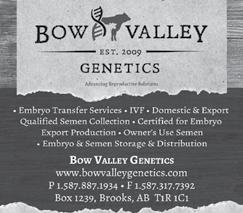

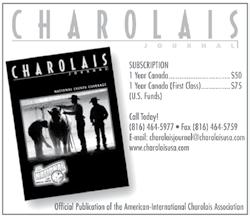
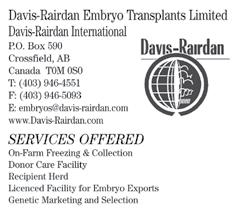
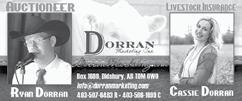

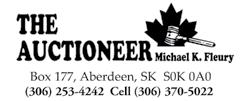
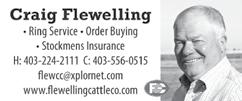

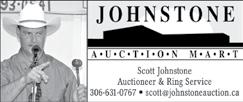
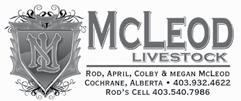




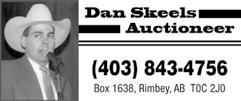
Advertise Your Services Here!
Call today and get your name out there! 306.584.7937
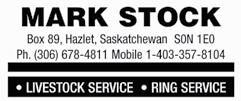
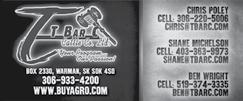
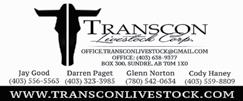

Alberta
breeders
